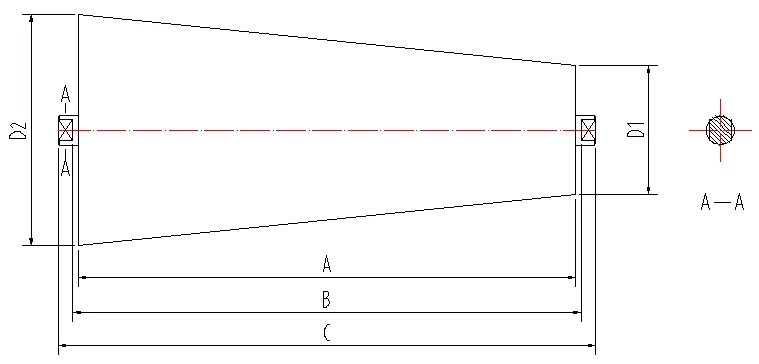 Afrikaans
Afrikaans  Albanian
Albanian  Amharic
Amharic  Arabic
Arabic  Armenian
Armenian  Azerbaijani
Azerbaijani  Basque
Basque  Belarusian
Belarusian  Bengali
Bengali  Bosnian
Bosnian  Bulgarian
Bulgarian  Catalan
Catalan  Cebuano
Cebuano  Corsican
Corsican  Croatian
Croatian  Czech
Czech  Danish
Danish  Dutch
Dutch  English
English  Esperanto
Esperanto  Estonian
Estonian  Finnish
Finnish  French
French  Frisian
Frisian  Galician
Galician  Georgian
Georgian  German
German  Greek
Greek  Gujarati
Gujarati  Haitian Creole
Haitian Creole  hausa
hausa  hawaiian
hawaiian  Hebrew
Hebrew  Hindi
Hindi  Miao
Miao  Hungarian
Hungarian  Icelandic
Icelandic  igbo
igbo  Indonesian
Indonesian  irish
irish  Italian
Italian  Japanese
Japanese  Javanese
Javanese  Kannada
Kannada  kazakh
kazakh  Khmer
Khmer  Rwandese
Rwandese  Korean
Korean  Kurdish
Kurdish  Kyrgyz
Kyrgyz  Lao
Lao  Latin
Latin  Latvian
Latvian  Lithuanian
Lithuanian  Luxembourgish
Luxembourgish  Macedonian
Macedonian  Malgashi
Malgashi  Malay
Malay  Malayalam
Malayalam  Maltese
Maltese  Maori
Maori  Marathi
Marathi  Mongolian
Mongolian  Myanmar
Myanmar  Nepali
Nepali  Norwegian
Norwegian  Norwegian
Norwegian  Occitan
Occitan  Pashto
Pashto  Persian
Persian  Polish
Polish  Portuguese
Portuguese  Punjabi
Punjabi  Romanian
Romanian  Russian
Russian  Samoan
Samoan  Scottish Gaelic
Scottish Gaelic  Serbian
Serbian  Sesotho
Sesotho  Shona
Shona  Sindhi
Sindhi  Sinhala
Sinhala  Slovak
Slovak  Slovenian
Slovenian  Somali
Somali  Spanish
Spanish  Sundanese
Sundanese  Swahili
Swahili  Swedish
Swedish  Tagalog
Tagalog  Tajik
Tajik  Tamil
Tamil  Tatar
Tatar  Telugu
Telugu  Thai
Thai  Turkish
Turkish  Turkmen
Turkmen  Ukrainian
Ukrainian  Urdu
Urdu  Uighur
Uighur  Uzbek
Uzbek  Vietnamese
Vietnamese  Welsh
Welsh  Bantu
Bantu  Yiddish
Yiddish  Yoruba
Yoruba  Zulu
Zulu idler rollers for belt conveyors
Understanding Idler Rollers for Belt Conveyors
Belt conveyors are an integral part of various industries, facilitating material handling operations efficiently and effectively. One of the key components of these systems is the idler roller, which plays a crucial role in the overall performance and longevity of the conveyor. This article aims to explore the significance of idler rollers, their types, functions, and considerations for selection and maintenance.
What are Idler Rollers?
Idler rollers are cylindrical components that support the carrying surface of a conveyor belt. Positioned at regular intervals along the conveyor system, these rollers help maintain the belt's alignment, reduce friction, and facilitate smooth movement of materials from one point to another. The design and quality of idler rollers are vital for the efficient operation of conveyor systems, influencing factors such as energy consumption, wear and tear, and material flow.
Types of Idler Rollers
Idler rollers come in various types, each tailored for specific applications and environments. The most common types include
1. Flat Idlers These are the most basic type and are used to support the carrying section of the belt. Flat idlers are ideal for transporting bulk materials and are typically equipped with bearings for smooth rotation.
2. Trough Idlers Designed with a slight curve, trough idlers help form a 'V' shape with the conveyor belt, enhancing its ability to carry loose materials without spillage. This design is particularly useful in mining and construction applications.
3. Return Rollers As the name suggests, return rollers support the belt on its return journey to the loading area. They are critical in maintaining the belt's tension and preventing sagging.
4. Impact Rollers These rollers are strategically placed at loading zones to absorb the impact of heavy materials, thereby protecting the belt and extending its lifespan.
idler rollers for belt conveyors

Functions and Importance of Idler Rollers
Idler rollers serve multiple functions in belt conveyors
- Support They provide necessary support to the belt, ensuring it maintains its shape and alignment throughout the transportation process. - Tension Maintenance Properly functioning idlers help maintain consistent tension in the belt, which is essential for efficient material handling. - Friction Reduction By facilitating smooth belt movement, idler rollers reduce friction, which not only conserves energy but also minimizes wear on both the belt and the rollers themselves. - Load Distribution Idler rollers help evenly distribute the load across the conveyor, preventing overloading and reducing the risk of mechanical failure.
Key Considerations for Selection and Maintenance
When selecting idler rollers for a specific application, several factors need to be considered
1. Material Handling Needs Understand the type and weight of materials to be transported, as heavier materials may require specialized rollers for impact absorption.
2. Environmental Conditions The operational environment can affect roller design. For instance, corrosive or abrasive materials may necessitate rollers with protective coatings or sturdy materials.
3. Roller Diameter and Spacing The size and spacing of idler rollers can influence belt performance. It's important to follow manufacturer recommendations to ensure optimal functionality.
4. Maintenance Practices Regular maintenance is essential for prolonging the life of idler rollers. This includes checking for wear, ensuring bearings are well-lubricated, and replacing damaged components promptly.
Conclusion
Idler rollers are essential components in the efficiency and effectiveness of belt conveyors. By supporting the conveyor belt, reducing friction, and facilitating smooth material flow, they contribute significantly to various industries. Understanding the types, functions, and maintenance of idler rollers is crucial for optimizing conveyor operations and ensuring material handling success. Whether in mining, manufacturing, or logistics, investing in quality idler rollers can lead to improved performance and reduced operational costs over time.
-
Revolutionizing Conveyor Reliability with Advanced Rubber Lagging PulleysNewsJul.22,2025
-
Powering Precision and Durability with Expert Manufacturers of Conveyor ComponentsNewsJul.22,2025
-
Optimizing Conveyor Systems with Advanced Conveyor AccessoriesNewsJul.22,2025
-
Maximize Conveyor Efficiency with Quality Conveyor Idler PulleysNewsJul.22,2025
-
Future-Proof Your Conveyor System with High-Performance Polyurethane RollerNewsJul.22,2025
-
Driving Efficiency Forward with Quality Idlers and RollersNewsJul.22,2025





























